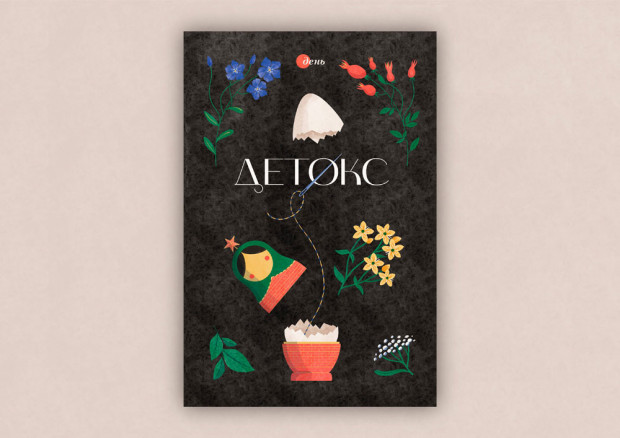We Will Remain Cultured a Whole Year

At St. Andrew’s they performed Mozart’s Sonata in C Major, Late August is the time to draw up reports and submit plans for officials in the budget-sustained domains of education and culture. Also because the next year 2003 has been officially proclaimed the Year of Ukrainian Culture. The subject was discussed on a “hotline” with Ukrainian Minister of Culture and Art Yury Bohutsky on August 30. There were many calls, mostly from people in the cultural sphere at the regional level. Most complained of low pay, no privileges, and layoffs.
The 2002 state budget spending was set at UAH 251 million. Currently, owing to limited appropriations, the actual amount is short UAH 30 million. Next year’s budget will be down to UAH 217 million. “As a result, we must revise the existing network of cultural facilities,” said Minister Bohutsky. “We are trying to earn something to sustain our sector, but culture will never be able to earn enough to do without state financing.”
At present, this sphere registers the lowest wages: an average of 149 hryvnias a month in cultural institutions and 260 hryvnias in the arts. An actor is paid approximately 120 hryvnias, and arrears on budget appropriations are increasing, amounting to UAH 1,387,200, as of August 1. The situation is especially bad in Vinnytsia, Volyn, Ivano-Frankivsk, Sumy, Chernihiv, Lviv, Kirovohrad, and Ternopil oblasts. In view of this, the ministry, jointly with the central trade-union committee of cultural workers, culture and spirituality committee, and legislature’s budget committee, set up a work group to see that the 2003 budget program provide for higher wages due the cultural workers of Ukraine. The nation’s film studios are still to be paid over 6 million hryvnias. “I am not against elite cinema. It is quite experimental, promising discoveries, searching for a new cinematographic language. Society needs its proverbial circus, a cinema meant for the masses, box-office production, instilling in our people a sense of patriotism and pride conveyed by characters on the screen.” And hence we need reform in filmmaking, because there is not a single such profitable project in Ukraine. “What we need in our cinema is not sponsors but investors. We can’t have good productions made on state money.”
Simultaneously he assured hotline callers, “Although the Ministry of Culture and the Arts is provided with low budget appropriations, all the institutions subordinated to the ministry are prepared for the new season.” The ministry runs a network of over 1,500 educational establishments at all levels and with all patterns of subordination. Of them four are “secondary specialized ministry-affiliated institutions,” 62 colleges of culture and the arts, 11 institutions of higher learning at the “third and fourth accreditation level” (three having the national status). The said third and fourth level institutions have admitted 5,845 first-year students (half, precisely 2,540 individuals, studying on a daytime basis). Also, these institutions have been assigned modern curricula.
Another question being considered is the transfer of the Kyiv Sophia Cultural Preserve to the Ministry of Culture and the Arts rather than the Derzhbud State Construction Committee. Before long, the ministry will have a “state service” protecting the cultural heritage, supervising all such historical and cultural sites. There are such sites in Ukraine currently entered on the UNESCO world cultural heritage lists; in addition to the St. Sophia Cathedral, the lists include the historical center of Lviv and the Kyiv-Pechersk Lavra Monastery of the Caves. The paperwork is being done to include two other contenders — the Chersonesus Taurica National Preserve and the historical downtown of Kamyanets- Podilsky. Design estimates of the National Art Museum will be prepared shortly to launch a renovation project in several phases. Phase 1: completion of the building on Instytutska St. Also, repair-and-restoration works on Hrushevsky St. The project will last till 2020 and the museum stock is expected to be replenished with modern works of Ukrainian art. The world-famous Scythian pectoral may be exhibited outside Ukraine for the first time in its history (invitations have been received from the United States, France, Germany, and Japan). And Minister Bohutsky believes it could yield considerable revenues for the Kyiv museum.
Naturally, the Scythian pectoral proceeds will not make up for the expenses involved in the domestic cultural realm. However, the minister, answering hotline calls showed an understanding of the need to search for new ways to resolve pressing problems, so 2003 can indeed become the Year of Ukrainian Culture.
INCIDENTALLY:
IS THE DEAD SEASON OVER FOR THE DOVZHENKO STUDIO?
Two weeks before the Day of the Ukrainian Cinema, the cabinet made a very timely present, adopting a re-equipment program embracing the Dovzhenko National Film Studios, to last until 2004.
According to Mykola Mashchenko, general director of the studios, the program will allow to create a filmmaking and video production base answering current world standards. The program budget amounts to UAH 20 million, including 19.7 million worth of central budget appropriations.
Mr. Mashchenko runs a huge enterprise, with 1,200 on payroll, ranging from wardrobe to camera crews to film directors to cast; a plot of seventeen hectares and premises covering an area of 100,000 square meters. All this needs constant attention. The sad fact remains that the old premises (founded in 1928) have never undergone any major renovation. The audio and other technical facilities cry for this, as their current condition stands no criticism, defying even elementary fire safety regulations. In other words, people working there are risking their lives. So the bulk of the funds will be channeled into audio, film, and video film production re-equipment, using the Dolby Stereo digital system; some two million hryvnias will be spent on actually re-equipping the audio facilities.
“A CD with the catalog Ukrainian Feature Films of the 1990s was currently released,” says Serhiy Trymbach, movie critic, manager of the Dovzhenko Studios Museum and deputy director general of the studios. “It covers 259 films made over the past decades; 130 feature films in 1991-92 — largely by the Dovzhenko Studios. We have had our ups and downs. Regrettably, Ukrainian movies have become exotic things. Our children and grandchildren know little of them, if anything at all. Everything has been turned upside down. We must lift and put that pyramid back on its foundation. Many problems plague the filmmaking industry, from obsolete studio equipment to lack of experts. A writer can produce a novel, using just a pen, and it won’t be any worse than a manuscript produced with the aid of a PC. A movie maker will never access the world market using obsolete equipment. I am happy we can finally see the light at the end of the Dovzhenko tunnel. Hopefully, we’ll get modern equipment.”
The studios’ management is of the opinion that the re-equipment project will boost their output quality, making their films competitive, so that they will not have to pay for help from other post-Soviet/socialist studios (in Russia, Poland, Hungary, and the Czech Republic). This will also have a positive effect on production costs, thus making it possible to lower distribution prices, meaning that Ukrainian audiences will benefit from it all.






